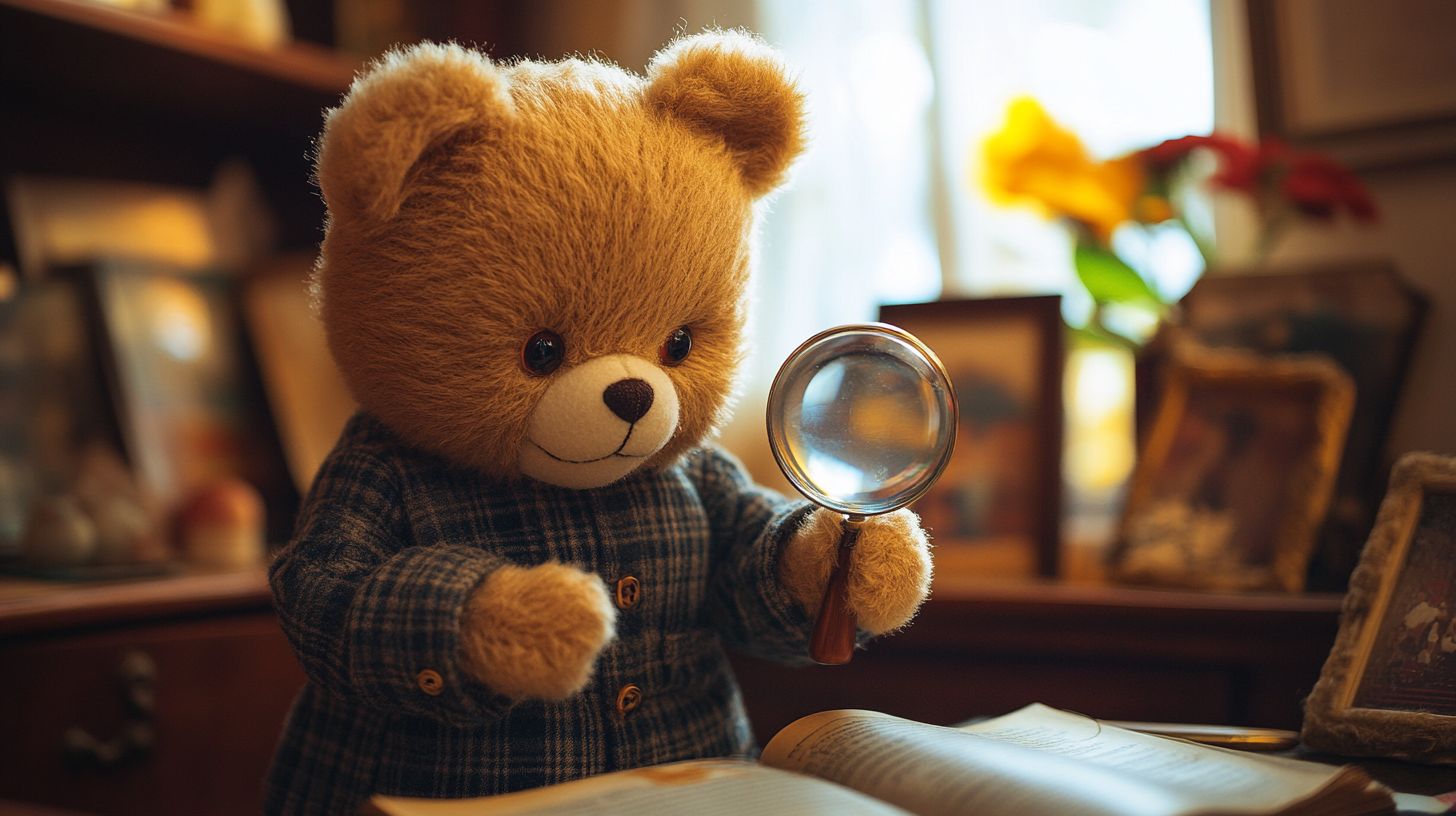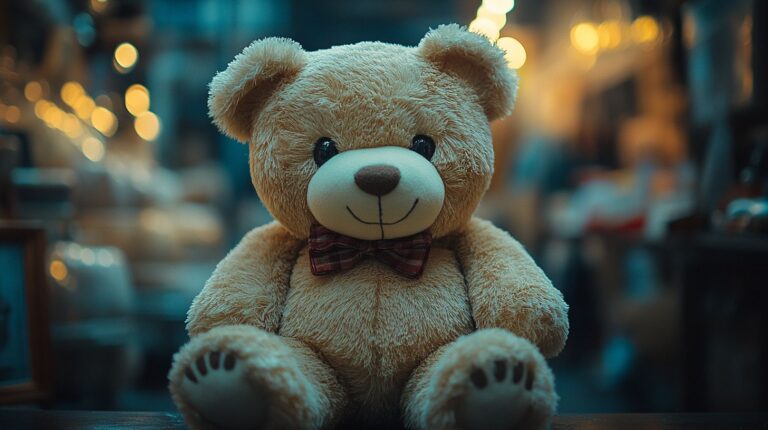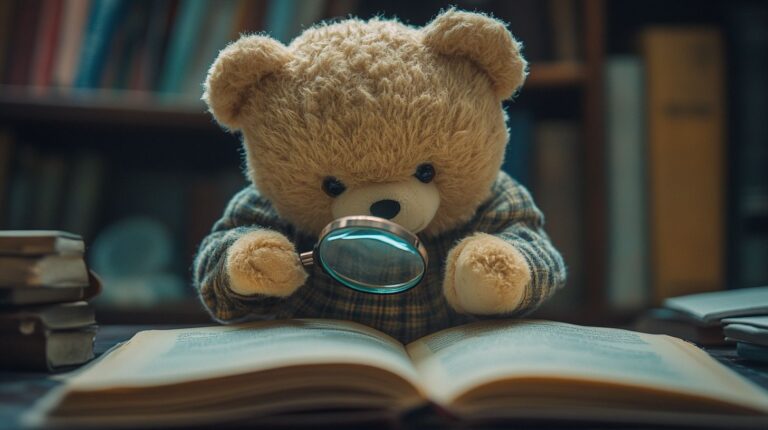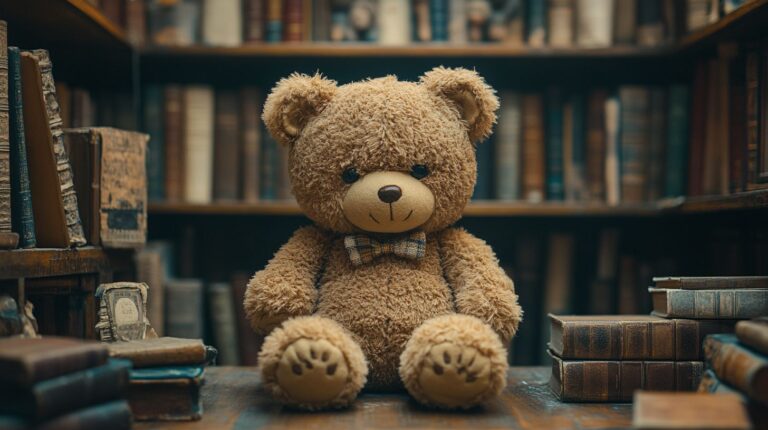Fancy yourself a vintage teddy collector? There are some rather telltale signs to watch for when determining if that charming old bear is the real deal. Original labels and tags are brilliant indicators – keep an eye out for the famous Steiff "Button in Ear" or those lovely old pre-decimal price tags showing shillings and pence.
The materials really do give the game away. Proper vintage bears were crafted with mohair plush and stuffed with wood wool, whilst their sweet faces featured glass eyes and felt paw pads. You might notice some balding on authentic pieces, but it should be evenly worn – a proper patina that comes from years of cuddles, rather than suspicious patches.
The joints are another dead giveaway. Give those limbs a gentle wiggle – authentic bears will have that satisfying click as they move. As for maker's marks, British manufacturers like Merrythought and Chad Valley left distinctive touches, though spotting these can be a touch tricky if you're just starting out. Mind you, there's quite a bit more to authenticating these treasured old bears, but these signs should point you in the right direction.
Key Takeaways
Spotting a Genuine Vintage Bear
You'll spot proper period labels on the genuine article – earlier specimens typically feature cotton or linen tags with the original maker's mark still visible, though they're often a bit worn around the edges these days.
The fabric itself tells quite a tale. Proper vintage teddies were crafted from mohair plush, and when you peek inside, you'll find traditional stuffing materials. Wood wool was rather popular, as were kapok and straw – none of that synthetic business you see in modern bears.
Rather fascinating how authentic bears develop their wear patterns over time. The mohair tends to thin rather evenly, particularly around the nose and belly where countless cuddles have taken their toll. Mind you, that's precisely what you'd want to see in a well-loved bear.
The joints are absolutely crucial – proper vintage pieces utilise either sturdy steel pins or traditional cotton-string joints, complete with cardboard discs or metal washers to keep everything secure. Bit like the engineering of a classic motor, really.
As for the overall craftsmanship, there's simply no cutting corners. Look for those telltale double-stitched seams, properly fitted felt paw pads, and those characteristic glass eyes. The finest examples show careful attention to reinforced joints – all hand-stitched, naturally. Properly sorted, these old bears were built to last.
Original Labels and Tags
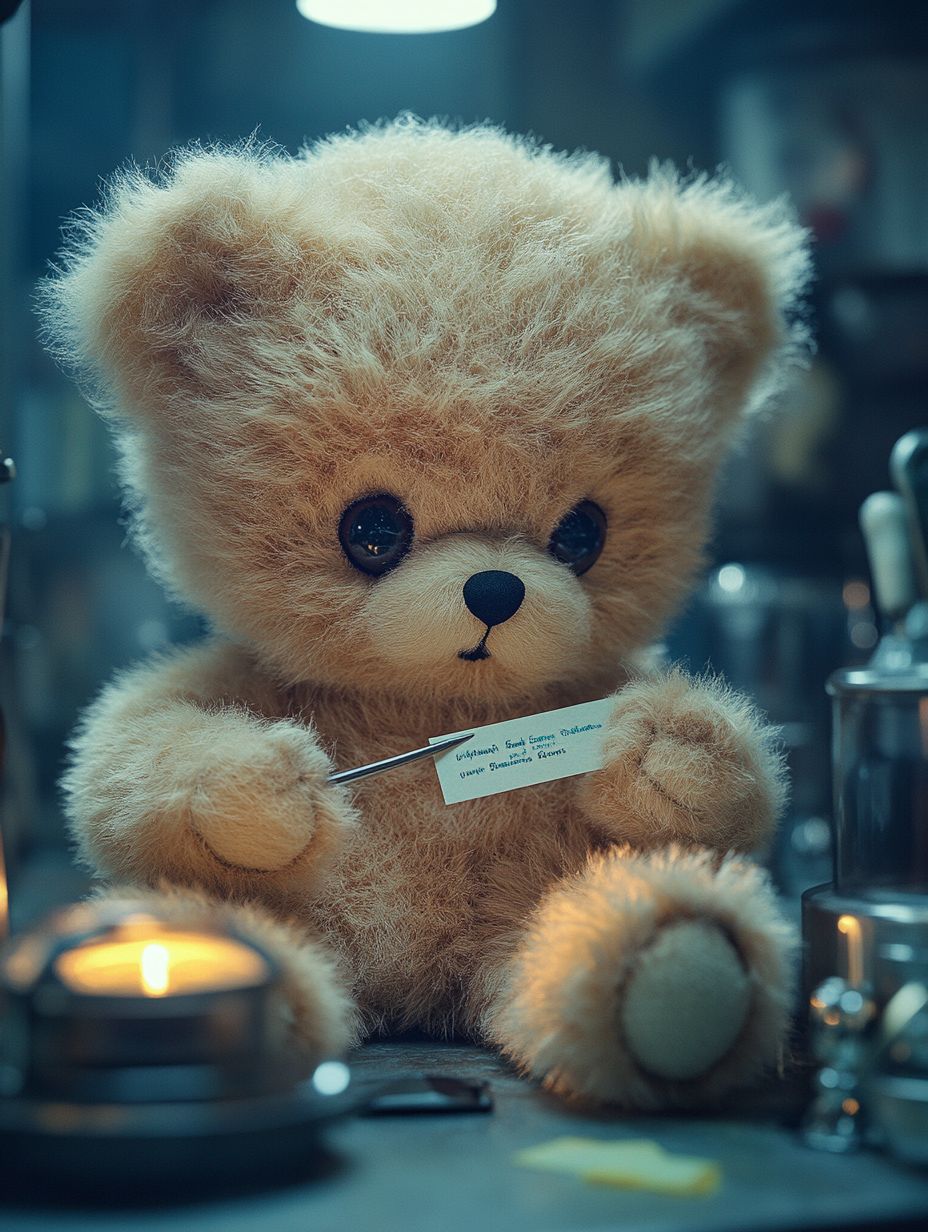
When it comes to authentication, there's nothing quite like examining those original labels and tags on vintage teddies. The real gems, like proper Steiff bears, ought to have their iconic "Button in Ear" – that little metal disc they've popped on since 1904. It's rather brilliant how much these small details can tell us.
The devil's in the details with labels, particularly the typography and materials. If you're looking at pre-war bears, you'll typically spot cotton or linen backing on the labels, whilst anything later tends towards synthetic stuff.
Rather particular makers like Merrythought from Shropshire were quite fussy about where they placed their labels – usually tucked away on the left foot or bottom seam. Mind you, if someone's trying to flog you a supposedly valuable bear for hundreds of quid, but the label looks suspiciously crisp or shows odd signs of ageing, chances are you're looking at a reproduction.
The clever fakery these days can be rather convincing, but genuine labels tell their own story through honest wear and tear. Keep an eye on the stitching around those labels – it should match what you'd expect from the period.
And here's a useful tip: for any British bear made before decimalisation in 1971, price marks should be in pounds, shillings and pence. Proper old money, that.
Construction Method and Materials
The craftsmanship of vintage teddy bears tells quite a fascinating story through their construction methods and materials. Pre-1940s bears tend to have a distinctly lovely mohair plush – worlds apart from today's synthetic fabrics.
What's particularly revealing is what's inside them: the earliest bears were stuffed with wood wool, kapok or straw, though manufacturers gradually shifted towards cotton and synthetic fillings as times changed.
The real charm lies in the details of how these old bears were put together. The finest makers, like Steiff and Merrythought, favoured hand-stitched joints with internal metal discs – proper craftsmanship that's rather hard to come by nowadays.
You might spot those telltale double-stitched seams with their charmingly uneven spacing, suggesting careful hand assembly rather than mass production. The original bears typically featured natural materials too – proper felt paw pads and genuine glass or boot-button eyes, not a scrap of plastic in sight.
The way these old bears' limbs move is absolutely crucial to their authenticity. The best manufacturers relied on disc-jointing or button-jointing methods that gave their bears proper movement.
Quality vintage pieces almost always have reinforced neck joints and robust back seams – they were built to last, after all. Should you come across what might be a pre-war bear, keep an eye out for those traditional cotter-pin joints. They were rather common before modern safety guidelines came along, though they're practically unheard of these days.
Unique Wear Patterns

Whilst manufacturing methods might reveal a teddy's origins, it's the delightful wear patterns that truly tell its life story. Genuine vintage bears develop rather lovely signs of being treasured – quite different from the artificial aging one spots on reproductions.
The mohair tends to show symmetrical balding where tiny hands have stroked away the fur, particularly round the muzzle and tummy. Rather charmingly, these patches develop gradually over decades.
The paw pads often give the game away. Most beloved old bears were dragged about by one particular paw, leaving it noticeably more threadbare than its mates. You might spot darned repairs on the fabric pads – quite typical of pre-war care and attention.
The joints tell their own tales too, with shoulders and hips becoming delightfully loose from countless cuddles.
Those little repairs and patches shouldn't put you off – quite the contrary! Bears from the 1920s and 30s often sport carefully hand-stitched mending or replacement eyes, suggesting they were cherished enough to warrant repair rather than replacement.
The stuffing tends to settle in the most peculiar ways, creating characterful lumps and bumps that modern reproductions simply can't match. These imperfections are rather splendid proof of a bear's authentic vintage.
Jointed Limbs and Design

Vintage teddy bears possess rather marvellous jointed limbs that modern makers simply haven't managed to replicate properly.
The joints themselves tell quite a fascinating story – proper vintage specimens feature clever arrangements of cardboard discs or metal washers that give them their characteristic movement. I'm particularly fond of old Merrythought and Chad Valley bears, as their craftsmanship really is something special.
You can spot a genuine old bear by examining how the limbs are attached. The best ones use either steel pins or cotton-string joints that make this lovely satisfying 'click' as you move them about.
The stitching around the connections tends to be remarkably neat, with reinforced seams placed just so. When positioned properly, these bears sit beautifully upright without collapsing in an ungainly heap.
The head joint is perhaps the trickiest bit to get right, and it's where many reproduction bears fall short. A proper vintage bear should have a neck joint that's balanced rather perfectly – not wobbling about like a dashboard nodding dog, but allowing for those endearing head movements that develop such character over the years.
Mind you, even within the same maker, you'll find slight variations that make each bear uniquely charming.
British Manufacturer Markings
Spotting genuine maker's marks on vintage British teddies can be quite fascinating, and there's something rather special about finding an original label tucked away in a bear's seam or paw.
Merrythought bears are perhaps the cream of the crop, with their charming woven labels that haven't changed much since 1934. Chad Valley pieces are particularly lovely too, especially when they sport the coveted royal warrant.
The evolution of these labels tells quite a story. Those early JK Farnell bears from before the war kept things remarkably simple – just a modest printed cloth tag without any fuss.
Dean's really hit their stride in the 1950s with those unmistakable golden-yellow labels and striking red text. Every now and then, you might stumble upon an absolute treasure still bearing its original price tag, complete with pre-decimal pricing in £.s.d.
When it comes to authenticity, the devil's in the details. A genuine vintage label should sit naturally in its stitching, with thread that matches perfectly.
Whilst some collectors fret about fading, I rather think a bit of wear adds character – those suspiciously pristine labels on modern reproductions simply don't have the same charm.
Mind you, there's quite an art to telling the real thing from a clever copy.
Conclusion
Discovering that your cherished teddy bear might be more than just a childhood companion is rather exciting, isn't it? While examining those tiny details – from faded labels to well-loved patches – you'll notice certain characteristics that set genuine vintage bears apart from the rest. It's quite remarkable when that old friend propped up in the attic turns out to be an authentic piece, perhaps even crafted by one of Britain's prestigious makers like Merrythought or Chad Valley. Mind you, even if your bear's value falls somewhere between a modest £50 or a staggering £5000, knowing its true heritage makes it all the more special. Still, best to temper expectations until you've properly scrutinised those telltale signs of authenticity.

